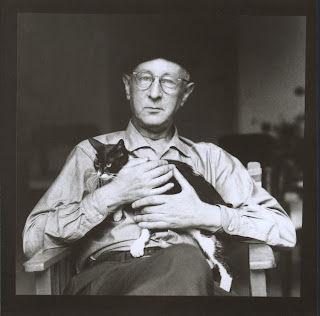Blurring: Fauré's Piano Trio in D minor, Op.120
 |
| John Singer Sargent Gabriele Fauré and Mrs Patrick Campbell (Charcoal, 1898) |
* * * *
Gabriele Fauré (1845–1924)
Piano Trio in D
minor, Op.120
In the early 20th century Debussy, Stravinsky,
and Schoenberg revolutionized the foundation of Western music in the areas of
tonality, harmony, and symmetric meter. At the same time, Gabriele Fauré was
working with this foundation, not by
abandoning the traditional structures, but by “blurring” them – especially in
his later works. (Christopher Steele, Tonal and Formal Blurring in Fauré’s Piano Trio Op. 120.) “Blurring” of tradition
is an excellent description for Fauré, but impossible to address in a program
note. However, a selective sketch of his life might provide a hint.
As a composer, from an early age, Fauré developed
independently of the establishment. Rather than the Paris Conservatoire, a
gateway for any French musician, he attended the École Niedermeyer in
Paris. His early influences came
from Gounod, Massenet, Chopin and Schumann, but the École added influences from
Gregorian chant, Renaissance polyphony, and modality. This mix – and his
imagination – resulted in works that eventually set him at odds with the conservative
Conservatoire. In 1892, when he was considered for a post as composition
professor at the Conservatoire, his nomination was rejected by the head on the
grounds that his music was too “modern.” Four years later, after the head of
the Conservatoire died, Fauré was finally appointed professor of composition.
Among his pupils were Maurice Ravel (also represented on this program) and
Nadia Boulanger. Then in 1905 Fauré became head of the Conservatoire. Beginning
in 1911 he began to lose his hearing, and in 1920 he retired as head of the
Conservatoire. His health continued to deteriorate, and in 1924 he died of
pneumonia at age 79.
– Stephen Soderberg
Program Note,
2017 Charlottesville Chamber Music Festival



Comments
Post a Comment